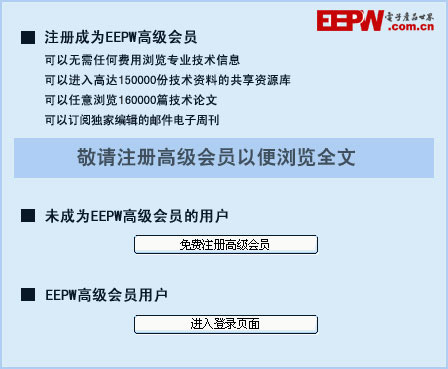【輕量化】三個(gè)經(jīng)典輕量化網(wǎng)絡(luò)解讀
1. 引言
模型壓縮常用的方案包括量化、蒸餾、輕量化網(wǎng)絡(luò)、網(wǎng)絡(luò)剪枝(稀疏化)等,詳細(xì)介紹可見文章:。最近在學(xué)習(xí)地平線提供的輕量化網(wǎng)絡(luò)結(jié)構(gòu) HENet,結(jié)合幾年前整理的 mobilenetv3、Efficnertnet 放在一塊進(jìn)行介紹。
輕量化網(wǎng)絡(luò)旨在減少模型參數(shù)和計(jì)算量,同時(shí)保持較高準(zhǔn)確率。為了降低設(shè)備能耗,提升實(shí)時(shí)性,輕量化網(wǎng)絡(luò)結(jié)構(gòu)在嵌入式設(shè)備等資源受限環(huán)境中廣泛應(yīng)用。
2. 經(jīng)典輕量化網(wǎng)絡(luò)結(jié)構(gòu)
2.1 MobileNetV3
SE 模塊類似注意力機(jī)制,通過全局平均池化和兩個(gè)全連接層,計(jì)算每個(gè)通道的權(quán)重系數(shù),自適應(yīng)調(diào)整特征。SE 模塊細(xì)節(jié)介紹如下
此外,還更換激活函數(shù)為 hardswish 和 relu,前者計(jì)算速度快且對量化過程友好,最后 1x1 降維投影層使用線性激活,整體提升計(jì)算效率和量化友好性。 具體代碼介紹,可見文章:。
2.2 EfficientNet
1. 總體介紹:利用 NAS 技術(shù),綜合考慮輸入分辨率、網(wǎng)絡(luò)深度和寬度,平衡三者關(guān)系,構(gòu)建高效網(wǎng)絡(luò)。通過調(diào)整寬度系數(shù)和深度系數(shù),改變網(wǎng)絡(luò)的通道數(shù)和層數(shù),有 EfficientNet-B0 到 B7 多個(gè)變體,EfficientNet-B0 作為基礎(chǔ)版本,B1 - B7 在其基礎(chǔ)上逐漸增加復(fù)雜度和性能。
2. MBConv 結(jié)構(gòu):包含 1x1 普通卷積(升維)、kxk 深度卷積(3x3 或 5x5)、SE 模塊、1x1 普通卷積(降維)和 Dropout 層。SE 模塊中第一個(gè)全連接層節(jié)點(diǎn)個(gè)數(shù)是輸入特征矩陣通道數(shù)的 1/4,使用 Swish 激活函數(shù);第二個(gè)全連接層節(jié)點(diǎn)個(gè)數(shù)等于深度卷積層輸出通道數(shù),使用 Sigmoid 激活函數(shù)。

具體代碼介紹,可見文章:。
3. HENet:地平線的高效輕量化網(wǎng)絡(luò)
理論部分, 介紹的很好!下面不會過多介紹,重點(diǎn)在代碼使用。
HENet(Hybrid Efficient Network)是針對地平線 征程 6 系列芯片設(shè)計(jì)的高效網(wǎng)絡(luò)。
3.1 HENet_TinyM 理論簡介
采用純 CNN 架構(gòu),分為四個(gè) stage,每個(gè) stage 進(jìn)行一次 2 倍下采樣。通過不同的參數(shù)配置,如 depth、block_cls、width 等,構(gòu)建高效的特征提取網(wǎng)絡(luò)。
DWCB:主分支使用 3x3 深度卷積融合空間信息,兩個(gè)連續(xù)的點(diǎn)卷積融合通道信息,借鑒 transformer 架構(gòu),在殘差分支添加可學(xué)習(xí)的 layer_scale,平衡性能與計(jì)算量。
GroupDWCB:基于 DWCB 改進(jìn),將主分支第一個(gè)點(diǎn)卷積改為點(diǎn)分組卷積,在特定條件下可實(shí)現(xiàn)精度無損且提速(實(shí)驗(yàn)中觀察到,當(dāng)滿足 ① channel 數(shù)量不太小 ② 較淺的位層 兩個(gè)條件時(shí),GroupDWCB 可以達(dá)到精度無損,同時(shí)提速的效果),在 TinyM 的第二個(gè) stage 使用(g = 2)。
AltDWCB:DWCB 的變種,將深度卷積核改為(1,5)或(5,1)交替使用,在第三個(gè) stage 使用可提升性能,適用于層數(shù)較多的 stage。
2.下采樣方式:S2DDown 使用 space to depth 操作降采樣,利用 征程 6 系列芯片對 tensor layout 操作的高效支持,快速完成降采樣,改變特征的空間和通道維度。(自己設(shè)計(jì)時(shí),謹(jǐn)慎使用 S2DDown 降采樣方法。)
自行構(gòu)建有效基礎(chǔ) block:構(gòu)建 baseline 時(shí),可先使用 DWCB,再嘗試 GroupDWCB/AltDWCB 結(jié)構(gòu)提升性能。
3.2 性能/精度數(shù)據(jù)對比
從幀率和精度數(shù)據(jù)來看,HENet_TinyM 和 HENet_TinyE 在 J6 系列芯片上表現(xiàn)出色,與其他經(jīng)典輕量化網(wǎng)絡(luò)相比,在保證精度的同時(shí),具有更高的幀率,更適合實(shí)際應(yīng)用。
3.3 HENet_TinyM 代碼詳解
HENet 源碼在地平線 docker 路徑:/usr/local/lib/python3.10/dist-packages/hat/models/backbones/henet.py
HENet_TinyM 總體分為四個(gè) stage,每個(gè) stage 會進(jìn)行一次 2 倍下采樣。以下是總體的結(jié)構(gòu)配置:
# ---------------------- TinyM ---------------------- depth = [4, 3, 8, 6] block_cls = ["GroupDWCB", "GroupDWCB", "AltDWCB", "DWCB"] width = [64, 128, 192, 384] attention_block_num = [0, 0, 0, 0] mlp_ratios, mlp_ratio_attn = [2, 2, 2, 3], 2 act_layer = ["nn.GELU", "nn.GELU", "nn.GELU", "nn.GELU"] use_layer_scale = [True, True, True, True] final_expand_channel, feature_mix_channel = 0, 1024 down_cls = ["S2DDown", "S2DDown", "S2DDown", "None"]
參數(shù)含義:
depth:每個(gè) stage 包含的 block 數(shù)量
block_cls:每個(gè) stage 使用的基礎(chǔ) block 類型
width:每個(gè) stage 中 block 的輸出 channel 數(shù)
attention_block_num:每個(gè) stage 中的 attention_block 數(shù)量,將用在 stage 的尾部(TinyM 中沒有用到)
mlp_ratios:每個(gè) stage 中的 mlp 的通道擴(kuò)增系數(shù)
act_layer:每個(gè) stage 使用的激活函數(shù)
use_layer_scale:是否對 residual 分支進(jìn)行可學(xué)習(xí)的縮放
final_expand_channel:在網(wǎng)絡(luò)尾部的 pooling 之前進(jìn)行 channel 擴(kuò)增的數(shù)量,0 代表不使用擴(kuò)增
feature_mix_channel :在分類 head 之前進(jìn)行 channel 擴(kuò)增的數(shù)量
down_cls:每個(gè) stage 對應(yīng)的下采樣類型
代碼解讀:
from typing import Sequence, Tuple
import horizon_plugin_pytorch.nn as hnn
import torch
import torch.nn as nn
from horizon_plugin_pytorch.quantization import QuantStub
from torch.quantization import DeQuantStub
# 基礎(chǔ)模塊的代碼,可見地平線提供的OE docker
# /usr/local/lib/python3.10/dist-packages/hat/models/base_modules/basic_henet_module.py
from basic_henet_module import (
BasicHENetStageBlock, # HENet 的基本階段塊
S2DDown, # 降采樣(downsampling)模塊
)
from basic_henet_module import ConvModule2d # 2D 卷積層模塊
# 繼承 torch.nn.Module,定義神經(jīng)網(wǎng)絡(luò)的標(biāo)準(zhǔn)方式
class HENet(nn.Module):
"""
Module of HENet.
Args:
in_channels: The in_channels for the block.
block_nums: Number of blocks in each stage.
embed_dims: Output channels in each stage.
attention_block_num: Number of attention blocks in each stage.
mlp_ratios: Mlp expand ratios in each stage.
mlp_ratio_attn: Mlp expand ratio in attention blocks.
act_layer: activation layers type.
use_layer_scale: Use a learnable scale factor in the residual branch.
layer_scale_init_value: Init value of the learnable scale factor.
num_classes: Number of classes for a Classifier.
include_top: Whether to include output layer.
flat_output: Whether to view the output tensor.
extra_act: Use extra activation layers in each stage.
final_expand_channel: Channel expansion before pooling.
feature_mix_channel: Channel expansion is performed before head.
block_cls: Basic block types in each stage.
down_cls: Downsample block types in each stage.
patch_embed: Stem conv style in the very beginning.
stage_out_norm: Add a norm layer to stage outputs.
Ignored if include_top is True.
"""
def __init__(
self,
in_channels: int, # 輸入圖像的通道數(shù)(常見圖像為 3)
block_nums: Tuple[int], # 每個(gè)階段(Stage)的基礎(chǔ)塊(Block)數(shù)量
embed_dims: Tuple[int], # 每個(gè)階段的特征通道數(shù)
attention_block_num: Tuple[int], # 每個(gè)階段的注意力塊(Attention Block)數(shù)量
mlp_ratios: Tuple[int] = (2, 2, 2, 2), # 多層感知機(jī)(MLP)擴(kuò)展比率
mlp_ratio_attn: int = 2,
act_layer: Tuple[str] = ("nn.GELU", "nn.GELU", "nn.GELU", "nn.GELU"), # 激活函數(shù)類型
use_layer_scale: Tuple[bool] = (True, True, True, True),
layer_scale_init_value: float = 1e-5,
num_classes: int = 1000,
include_top: bool = True, # 是否包含最終的分類頭(通常為 nn.Linear)
flat_output: bool = True,
extra_act: Tuple[bool] = (False, False, False, False),
final_expand_channel: int = 0,
feature_mix_channel: int = 0,
block_cls: Tuple[str] = ("DWCB", "DWCB", "DWCB", "DWCB"),
down_cls: Tuple[str] = ("S2DDown", "S2DDown", "S2DDown", "None"),
patch_embed: str = "origin", # 圖像預(yù)處理方式(卷積 embedding)
stage_out_norm: bool = True, # 是否在階段輸出后加一層 BatchNorm,建議不要
):
super().__init__()
self.final_expand_channel = final_expand_channel
self.feature_mix_channel = feature_mix_channel
self.stage_out_norm = stage_out_norm
self.block_cls = block_cls
self.include_top = include_top
self.flat_output = flat_output
if self.include_top:
self.num_classes = num_classes
# patch_embed 負(fù)責(zé)將輸入圖像轉(zhuǎn)換為特征
# 里面有兩個(gè)convModule2d,進(jìn)行了兩次 3×3 的卷積(步長 stride=2),相當(dāng)于 對輸入圖像進(jìn)行 4 倍降采樣
if patch_embed in ["origin"]:
self.patch_embed = nn.Sequential(
ConvModule2d(
in_channels,
embed_dims[0] // 2,
kernel_size=3,
stride=2,
padding=1,
norm_layer=nn.BatchNorm2d(embed_dims[0] // 2),
act_layer=nn.ReLU(),
),
ConvModule2d(
embed_dims[0] // 2,
embed_dims[0],
kernel_size=3,
stride=2,
padding=1,
norm_layer=nn.BatchNorm2d(embed_dims[0]),
act_layer=nn.ReLU(),
),
)
stages = [] # 構(gòu)建多個(gè)階段 (Stages),存放多個(gè) BasicHENetStageBlock,每個(gè)block處理不同通道數(shù)的特征。
downsample_block = [] # 存放 S2DDown,在每個(gè)階段之間進(jìn)行降采樣。
for block_idx, block_num in enumerate(block_nums):
stages.append(
BasicHENetStageBlock(
in_dim=embed_dims[block_idx],
block_num=block_num,
attention_block_num=attention_block_num[block_idx],
mlp_ratio=mlp_ratios[block_idx],
mlp_ratio_attn=mlp_ratio_attn,
act_layer=act_layer[block_idx],
use_layer_scale=use_layer_scale[block_idx],
layer_scale_init_value=layer_scale_init_value,
extra_act=extra_act[block_idx],
block_cls=block_cls[block_idx],
)
)
if block_idx < len(block_nums) - 1:
assert eval(down_cls[block_idx]) in [S2DDown], down_cls[
block_idx
]
downsample_block.append(
eval(down_cls[block_idx])(
patch_size=2,
in_dim=embed_dims[block_idx],
out_dim=embed_dims[block_idx + 1],
)
)
self.stages = nn.ModuleList(stages)
self.downsample_block = nn.ModuleList(downsample_block)
if final_expand_channel in [0, None]:
self.final_expand_layer = nn.Identity()
self.norm = nn.BatchNorm2d(embed_dims[-1])
last_channels = embed_dims[-1]
else:
self.final_expand_layer = ConvModule2d(
embed_dims[-1],
final_expand_channel,
kernel_size=1,
bias=False,
norm_layer=nn.BatchNorm2d(final_expand_channel),
act_layer=eval(act_layer[-1])(),
)
last_channels = final_expand_channel
if feature_mix_channel in [0, None]:
self.feature_mix_layer = nn.Identity()
else:
self.feature_mix_layer = ConvModule2d(
last_channels,
feature_mix_channel,
kernel_size=1,
bias=False,
norm_layer=nn.BatchNorm2d(feature_mix_channel),
act_layer=eval(act_layer[-1])(),
)
last_channels = feature_mix_channel
# 分類頭
if self.include_top:
self.avgpool = nn.AdaptiveAvgPool2d((1, 1)) # 將特征圖變?yōu)?nbsp;1×1
self.head = (
nn.Linear(last_channels, num_classes)
if num_classes > 0
else nn.Identity()
)
else:
stage_norm = []
for embed_dim in embed_dims:
if self.stage_out_norm is True:
stage_norm.append(nn.BatchNorm2d(embed_dim))
else:
stage_norm.append(nn.Identity())
self.stage_norm = nn.ModuleList(stage_norm)
self.up = hnn.Interpolate(
scale_factor=2, mode="bilinear", recompute_scale_factor=True
)
self.quant = QuantStub()
self.dequant = DeQuantStub()
def forward(self, x):
x = self.quant(x)
if isinstance(x, Sequence) and len(x) == 1:
x = x[0]
# 依次經(jīng)過 patch_embed、stages、downsample_block 處理特征圖。
x = self.patch_embed(x)
outs = []
for idx in range(len(self.stages)):
x = self.stages[idx](x)
if not self.include_top:
x_normed = self.stage_norm[idx](x)
if idx == 0:
outs.append(self.up(x_normed))
outs.append(x_normed)
if idx < len(self.stages) - 1:
x = self.downsample_block[idx](x)
if not self.include_top:
return outs
if self.final_expand_channel in [0, None]:
x = self.norm(x)
else:
x = self.final_expand_layer(x)
x = self.avgpool(x)
x = self.feature_mix_layer(x)
x = self.head(torch.flatten(x, 1))
x = self.dequant(x)
if self.flat_output:
x = x.view(-1, self.num_classes)
return x
# ---------------------- TinyM ----------------------
depth = [4, 3, 8, 6]
block_cls = ["GroupDWCB", "GroupDWCB", "AltDWCB", "DWCB"]
width = [64, 128, 192, 384]
attention_block_num = [0, 0, 0, 0]
mlp_ratios, mlp_ratio_attn = [2, 2, 2, 3], 2
act_layer = ["nn.GELU", "nn.GELU", "nn.GELU", "nn.GELU"]
use_layer_scale = [True, True, True, True]
extra_act = [False, False, False, False]
final_expand_channel, feature_mix_channel = 0, 1024
down_cls = ["S2DDown", "S2DDown", "S2DDown", "None"]
patch_embed = "origin"
stage_out_norm = False
# 初始化 HENet 模型
model = HENet(
in_channels=3, # 假設(shè)輸入是 RGB 圖像
block_nums=tuple(depth),
embed_dims=tuple(width),
attention_block_num=tuple(attention_block_num),
mlp_ratios=tuple(mlp_ratios),
mlp_ratio_attn=mlp_ratio_attn,
act_layer=tuple(act_layer),
use_layer_scale=tuple(use_layer_scale),
extra_act=tuple(extra_act),
final_expand_channel=final_expand_channel,
feature_mix_channel=feature_mix_channel,
block_cls=tuple(block_cls),
down_cls=tuple(down_cls),
patch_embed=patch_embed,
stage_out_norm=stage_out_norm,
num_classes=1000, # 假設(shè)用于 ImageNet 1000 類分類
include_top=True,
)
# ---------------------- 處理單幀輸入數(shù)據(jù) ----------------------
# 生成一個(gè)隨機(jī)圖像張量,假設(shè)輸入是 224x224 RGB 圖像
input_tensor = torch.randn(1, 3, 224, 224) # [batch, channels, height, width]
# ---------------------- 進(jìn)行推理 ----------------------
model.eval()
with torch.no_grad(): # 關(guān)閉梯度計(jì)算,提高推理速度
output = model(input_tensor)
# ---------------------- 輸出結(jié)果 ----------------------
print("模型輸出形狀:", output.shape)
print("模型輸出類型:", type(output))
print("模型輸出長度:", len(output))
print(output)
print("預(yù)測類別索引:", torch.argmax(output, dim=1).item()) # 獲取最大概率的類別索引
# 輸出 FLOPs 和 參數(shù)量
from thop import profile
flops, params = profile(model, inputs=(input_tensor,))
print(f"FLOPs: {flops / 1e6:.2f}M") # 以百萬次運(yùn)算(MFLOPs)顯示
print(f"Params: {params / 1e6:.2f}M") # 以百萬參數(shù)(M)顯示4. 基于 block 構(gòu)建網(wǎng)絡(luò)
可參考如下代碼構(gòu)建:
import torch
from torch import nn
from torch.quantization import DeQuantStub
from typing import Union, Tuple, Optional
from horizon_plugin_pytorch.nn.quantized import FloatFunctional as FF
from torch.nn.parameter import Parameter
from horizon_plugin_pytorch.quantization import QuantStub
class ChannelScale2d(nn.Module):
"""對 Conv2d 的輸出特征圖進(jìn)行線性縮放"""
def __init__(self, num_features: int) -> None:
super().__init__()
self.num_features = num_features
self.weight = Parameter(torch.ones(num_features)) # 初始化權(quán)重為1
self.weight_quant = QuantStub()
def forward(self, input: torch.Tensor) -> torch.Tensor:
return input * self.weight_quant(self.weight).reshape(self.num_features, 1, 1)
class ConvModule2d(nn.Module):
"""標(biāo)準(zhǔn)的 2D 卷積塊,包含可選的歸一化層和激活層"""
def __init__(
self,
in_channels: int,
out_channels: int,
kernel_size: Union[int, Tuple[int, int]],
stride: Union[int, Tuple[int, int]] = 1,
padding: Union[int, Tuple[int, int]] = 0,
dilation: Union[int, Tuple[int, int]] = 1,
groups: int = 1,
bias: bool = True,
padding_mode: str = "zeros",
norm_layer: Optional[nn.Module] = None,
act_layer: Optional[nn.Module] = None,
):
super().__init__()
layers = [nn.Conv2d(in_channels, out_channels, kernel_size, stride, padding, dilation, groups, bias, padding_mode)]
if norm_layer:
layers.append(norm_layer)
if act_layer:
layers.append(act_layer)
self.block = nn.Sequential(*layers)
def forward(self, x):
return self.block(x)
class GroupDWCB(nn.Module):
"""分組深度可分離卷積塊"""
def __init__(
self,
dim: int,
hidden_dim: int,
kernel_size: int = 3,
act_layer: str = "nn.ReLU",
use_layer_scale: bool = True,
extra_act: Optional[bool] = False,
):
super().__init__()
self.extra_act = eval(act_layer)() if extra_act else nn.Identity()
group_width_dict = {
64: 64,
128: 64,
192: 64,
384: 64,
256: 128,
48: 48,
96: 48,
}
group_width = group_width_dict.get(dim, 64)
self.dwconv = ConvModule2d(dim, dim, kernel_size=kernel_size, padding=kernel_size // 2, groups=dim, norm_layer=nn.BatchNorm2d(dim))
self.pwconv1 = nn.Conv2d(dim, hidden_dim, kernel_size=1, groups=dim // group_width)
self.act = eval(act_layer)()
self.pwconv2 = nn.Conv2d(hidden_dim, dim, kernel_size=1)
self.use_layer_scale = use_layer_scale
if use_layer_scale:
self.layer_scale = ChannelScale2d(dim)
self.add = FF()
def forward(self, x):
input_x = x
x = self.dwconv(x)
x = self.pwconv1(x)
x = self.act(x)
x = self.pwconv2(x)
if self.use_layer_scale:
x = self.add.add(input_x, self.layer_scale(x))
else:
x = self.add.add(input_x, x)
x = self.extra_act(x)
return x
class CustomModel(nn.Module):
"""完整的模型"""
def __init__(self, d_model=256, output_channels=2):
super().__init__()
self.encoder_layer = nn.Sequential(
GroupDWCB(dim=d_model, hidden_dim=d_model, kernel_size=3, act_layer="nn.ReLU"),
GroupDWCB(dim=d_model, hidden_dim=d_model, kernel_size=3, act_layer="nn.ReLU"),
)
self.out_layer = nn.Sequential(
ConvModule2d(in_channels=d_model, out_channels=d_model, kernel_size=1),
nn.BatchNorm2d(d_model),
nn.ReLU(inplace=True),
ConvModule2d(in_channels=d_model, out_channels=output_channels, kernel_size=1),
)
self.quant = QuantStub()
self.dequant = DeQuantStub()
def forward(self, x):
x = self.quant(x)
x = self.encoder_layer(x)
x = self.out_layer(x)
x = self.dequant(x)
return x
# =================== 輸入?yún)?shù) =================== #
d_model = 64
output_channels = 10
model = CustomModel(d_model=d_model, output_channels=output_channels)
# 生成輸入
input_tensor = torch.randn(1, 64, 300, 200)
# 前向傳播
output = model(input_tensor)
print("The shape of output is:", output.shape)
# 輸出 FLOPs 和 參數(shù)量
from thop import profile
flops, params = profile(model, inputs=(input_tensor,))
print(f"FLOPs: {flops / 1e6:.2f}M") # 以百萬次運(yùn)算(MFLOPs)顯示
print(f"Params: {params / 1e6:.2f}M") # 以百萬參數(shù)(M)顯示輸出信息如下:
The shape of output is: torch.Size([1, 10, 300, 200]) FLOPs: 1382.40M Params: 0.02M
*博客內(nèi)容為網(wǎng)友個(gè)人發(fā)布,僅代表博主個(gè)人觀點(diǎn),如有侵權(quán)請聯(lián)系工作人員刪除。















